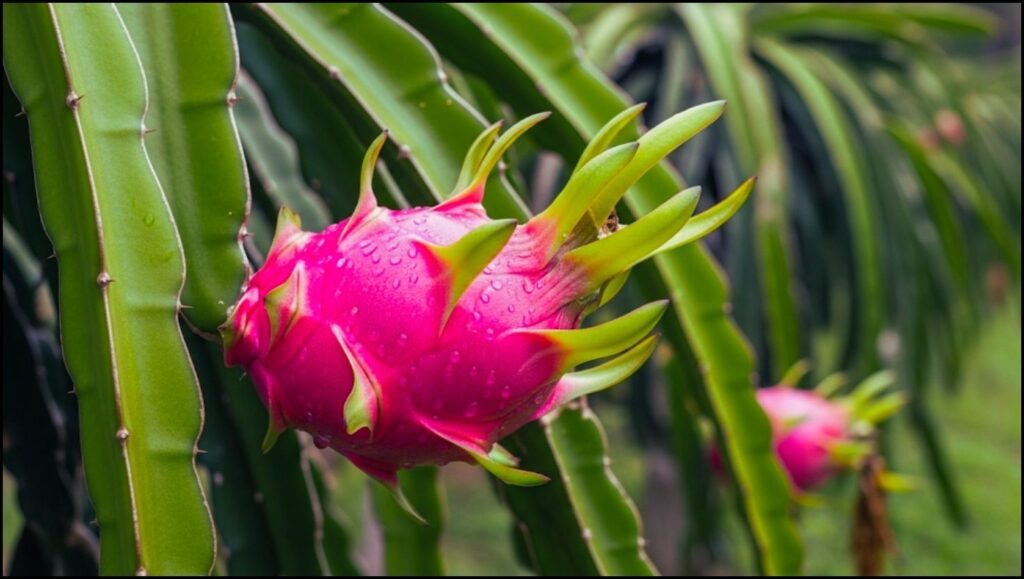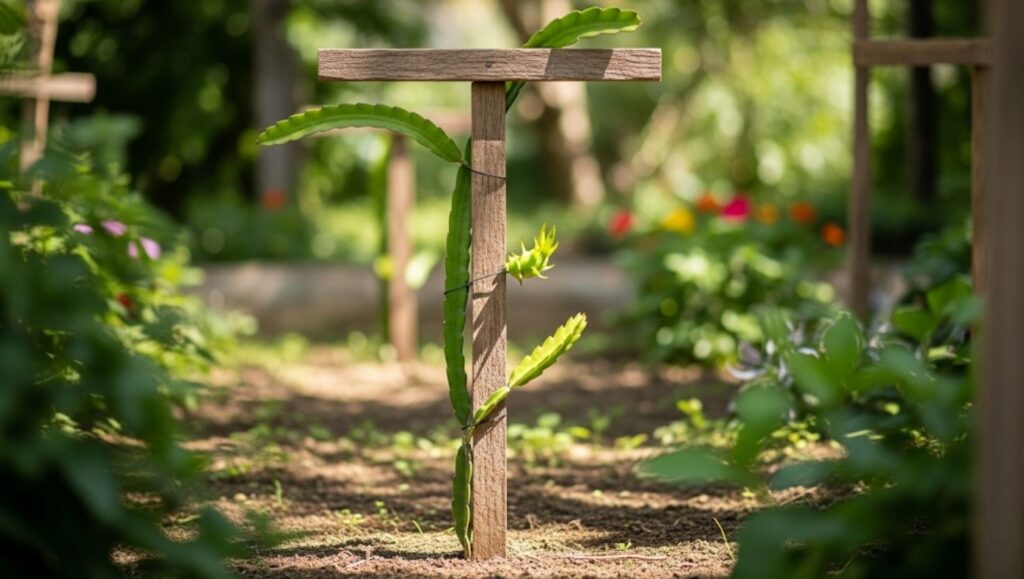
The dragon fruit, an exotic cactus with a striking appearance and growing global demand, is increasingly finding a home in private gardens. While its appearance suggests a complex undertaking, horticultural experts confirm that with proper technique and an understanding of its needs, it is possible for home gardeners to successfully grow a dragon fruit plant and harvest their own fruit.
Key Growth Requirements at a Glance
| Key Factor | Detail / Specification |
| Growth Method | Use a cutting from a mature plant for faster fruiting (1-2 years) and genetic consistency. Seeds can take 5-7 years. |
| Sunlight | Minimum 6-8 hours of direct sunlight per day. |
| Soil | Well-draining, sandy loam or cactus mix. Avoid heavy, water-logged soils to prevent root rot. |
| Support | Essential. A strong trellis, arbor, or post at least 6 feet tall is required to support the climbing cactus. |
| Watering | Water when the top 1-2 inches of soil are dry. Water deeply but infrequently. Reduce watering in winter. |
| USDA Zones | Thrives outdoors in Zones 10-11. Can be grown in containers and moved indoors in colder climates. |
Understanding the Dragon Fruit: A Climbing Cactus
The dragon fruit, or pitaya, is the fruit of several different cactus species native to the Americas, primarily of the genus Hylocereus. Despite its tropical classification, it is a vining, epiphytic cactus that extracts moisture and nutrients from the air and rain, and climbs on other structures to reach sunlight.
“People are often surprised to learn it’s a cactus,” said Dr. Amelia Reed, a horticulturist at the University of California Division of Agriculture and Natural Resources. “It requires the high sun exposure of a desert plant but the periodic, deep watering characteristic of a tropical environment. Understanding this duality is the key to success.” This unique nature dictates its specific cultivation requirements.
How to Grow a Dragon Fruit Plant: Getting Started
Successfully cultivating pitaya begins with selecting the right starting material and preparing the proper environment. The initial choices made by a grower have a significant impact on the time until first harvest and the overall health of the plant.
Choosing Your Method: Seeds vs. Cuttings
While dragon fruit can be grown from the small, black seeds found inside the fruit, experts overwhelmingly recommend starting from a dragon fruit cutting. A plant grown from seed can take between five and seven years to produce fruit and may not have the same characteristics as the parent fruit.
In contrast, a cutting is a genetically identical clone of the parent plant. “A cutting from a known, productive variety ensures you know what kind of fruit you will get, and it can begin producing fruit in as little as one to two years with proper care,” Dr. Reed noted in a university publication. Cuttings, typically 12 to 24 inches long, should be allowed to cure for several days in a dry, shady place before planting to allow the cut end to form a callus, which prevents rot.

The Critical Steps for Planting and Care
Once a cutting is acquired, a few fundamental elements must be in place to ensure the plant thrives. These include the correct soil composition, adequate support for its climbing habit, and a disciplined watering schedule.
Soil, Light, and Water
Dragon fruit requires well-draining soil to prevent root rot, a common issue for novice growers. A mixture of potting soil with sand or perlite to improve drainage is ideal. Commercial cactus and succulent mixes are also suitable.
The plant should be placed in a location that receives at least six to eight hours of direct sunlight daily. According to a guide from the University of Florida’s Institute of Food and Agricultural Sciences (IFAS) Extension, insufficient light is a primary reason for a lack of flowering and fruiting.
Watering is a critical balance. The soil should be allowed to dry out between waterings. “Treat it like a cactus, not a fern,” advised a guide from the Royal Horticultural Society. “Overwatering is a far more common problem than underwatering.”
The Importance of a Trellis
As a climbing cactus, a dragon fruit plant is unable to support its own weight. It must be provided with a strong, permanent trellis from the day it is planted. This support structure should be at least six feet tall and made of durable materials like treated wood or metal. As the plant grows, its aerial roots will cling to the support as it climbs toward the light.
“Without a robust trellis, the plant’s segments will sprawl on the ground, where they are susceptible to rot and pests, and they will not mature properly to produce flowers,” states a report from Purdue University’s Horticulture Department.

Advanced Pitaya Plant Care for a Bountiful Harvest
With the fundamentals in place, growers can focus on techniques that encourage abundant fruit production, including strategic fertilization and pollination.
Pruning and Fertilizing
Once the main stem reaches the top of the trellis, its tip should be pruned to encourage it to send out multiple lateral branches. It is these weeping, umbrella-like branches that will produce flowers and fruit. Regular pruning of tangled or damaged stems improves air circulation and directs the plant’s energy toward fruit development.
A balanced, low-nitrogen fertilizer can be applied during the growing season (spring and summer) to support growth and flowering.
The Art of Hand Pollination for Dragon Fruit
Many popular dragon fruit varieties are not self-pollinating. Their large, fragrant flowers bloom only at night and for a single night. In their native environment, they are pollinated by moths and bats. Outside of this range, hand pollination for dragon fruit is often necessary to ensure fruit set.
To hand-pollinate, growers must use a small brush to collect pollen from the anthers of one flower and transfer it to the stigma of another flower from a different dragon fruit variety. “This cross-pollination is essential for many of the most desirable commercial varieties,” Dr. Reed confirms. “It’s a simple step that can be the difference between a flower that wilts and a plant that produces a 1-pound fruit.”
As interest in sustainable living and home food production continues to grow, the dragon fruit represents a unique and rewarding challenge. While it requires specific care, particularly regarding its support structure and pollination needs, the result is a visually stunning plant that produces one of the world’s most unique tropical fruits right in one’s own backyard.
A Factual Guide on How to Plant an Avocado Seed and Nurture a Tree
